#mern stack full form
Text
0 notes
Text
web development,
web development,
In the ever-evolving landscape of technology, web development stands as a testament to human innovation and creativity. From the humble beginnings of static HTML pages to the sophisticated realm of full-stack development, the journey of web development has been marked by groundbreaking advancements, paradigm shifts, and endless possibilities. Let's embark on a journey through time and explore the evolution of web development, from its inception to its current state of complexity and dynamism.
The Birth of the Web: HTML and Static Pages
At the dawn of the internet age, Tim Berners-Lee introduced the World Wide Web, laying the foundation for modern web development. HyperText Markup Language (HTML) emerged as the language of the web, enabling developers to create static web pages with text, images, and hyperlinks. These early websites were basic and primarily informational, lacking interactivity and dynamic content.
The Rise of Dynamic Content: Introduction of CSS and JavaScript
As the demand for more engaging and interactive web experiences grew, cascading style sheets (CSS) and JavaScript emerged as game-changers. CSS allowed developers to enhance the visual appeal of web pages, while JavaScript empowered them to add dynamic functionality and interactivity. This era witnessed the birth of animated effects, client-side form validation, and AJAX (Asynchronous JavaScript and XML), enabling seamless data exchange between the client and server without page reloads.
The Era of Server-Side Scripting: PHP, ASP, and Ruby on Rails
With the increasing complexity of web applications, server-side scripting languages like PHP, ASP (Active Server Pages), and Ruby on Rails gained prominence. These languages enabled developers to build dynamic websites capable of processing user input, accessing databases, and generating personalized content on the fly. The server-side scripting era marked a significant shift towards more robust and scalable web development practices.
The Emergence of Content Management Systems (CMS)
As the internet became inundated with content, the need for efficient content management solutions arose. Content Management Systems (CMS) like WordPress, Joomla, and Drupal emerged as popular platforms for building and managing dynamic websites with ease. These systems offered customizable templates, plugins, and user-friendly interfaces, democratizing web development and empowering individuals and businesses to create and publish content effortlessly.
The Advent of Front-End Frameworks: Angular, React, and Vue.js
In response to the growing demand for richer, more responsive web applications, front-end frameworks like Angular, React, and Vue.js revolutionized the way developers built user interfaces. These frameworks leveraged the power of component-based architecture, virtual DOM manipulation, and reactive data binding to create fast, interactive, and maintainable web applications. With a focus on modularization and reusability, front-end frameworks streamlined the development process and fostered collaboration among developers.
The Era of Full-Stack Development: MEAN, MERN, and Beyond
As web applications became increasingly complex, the demand for developers proficient in both front-end and back-end technologies soared. Full-stack development emerged as a holistic approach to web development, encompassing skills in HTML, CSS, JavaScript, server-side scripting, databases, and deployment. Stacks like MEAN (MongoDB, Express.js, Angular, Node.js) and MERN (MongoDB, Express.js, React, Node.js) gained popularity for their versatility, scalability, and efficiency in building modern web applications.
The Future of Web Development: Progressive Web Apps (PWAs) and Beyond
Looking ahead, the future of web development holds exciting prospects, with technologies like Progressive Web Apps (PWAs), WebAssembly, and serverless architecture leading the way. PWAs blur the line between web and native applications, offering offline capabilities, push notifications, and app-like experiences across devices. WebAssembly enables high-performance, near-native code execution in the browser, opening doors to a new era of web applications with unprecedented speed and functionality. Serverless architecture abstracts away infrastructure management, allowing developers to focus on writing code and delivering value without worrying about server maintenance.
Conclusion:
The evolution of web development is a testament to human ingenuity and innovation. From the humble beginnings of static HTML pages to the sophisticated realm of full-stack mastery, web developers have continuously pushed the boundaries of what's possible on the web. As we embrace new technologies and embrace the challenges of tomorrow, one thing remains certain: the journey of web development is far from over, and the future is brimming with endless opportunities for those daring enough to explore it.
0 notes
Text
The MERN Stack Journey Crafting Dynamic Web Applications
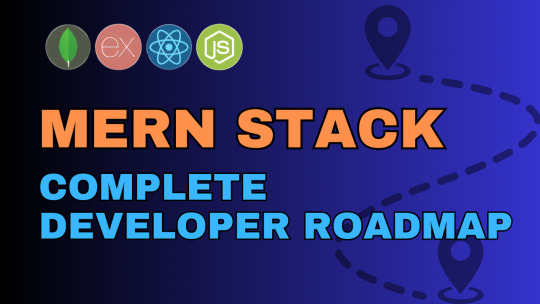
This course initiates an engaging expedition into the realm of MERN stack development course. The MERN stack, comprising MongoDB, Express.js, React, and Node.js, stands as a potent fusion of technologies empowering developers to construct dynamic and scalable web applications. Whether you're a novice venturing into web development or a seasoned professional aiming to broaden your expertise, this course equips you with the requisite knowledge and hands-on practice to master the MERN stack.
Diving into MongoDB the Foundation of Data Management
Our journey commences with MongoDB, a premier NoSQL database offering versatility and scalability in managing extensive datasets. We delve into the essentials of MongoDB, encompassing document-based data structuring, CRUD operations, indexing techniques, and aggregation methodologies. By course end, you'll possess a firm grasp on harnessing MongoDB for data storage and retrieval within MERN stack applications.
Constructing Robust Backend Services with Express.js
Subsequently, we immerse ourselves in Express.js, a concise web application framework for Node.js, to fabricate the backend infrastructure of our MERN stack applications. You'll acquire proficiency in crafting RESTful APIs with Express.js, handling HTTP transactions, integrating middleware for authentication and error management, and establishing connectivity with MongoDB for database interactions. Through practical exercises and projects, you'll cultivate adeptness in constructing resilient and scalable backend systems using Express.js.
Crafting Dynamic User Interfaces with React
Transitioning to the frontend domain, we harness the capabilities of React, a JavaScript library for crafting user interfaces. In MERN stack development course you’ll master the art of formulating reusable UI components, managing application state via React hooks and context, processing user input and form submissions, and implementing client-side routing mechanisms for single-page applications. Upon course completion, you'll possess the prowess to develop dynamic and interactive user interfaces utilizing react.
Orchestrating Full-Stack Development with Node.js
In the concluding segment of the course, we synergize all components, leveraging Node.js to orchestrate full-stack MERN applications. You'll learn to establish frontend-backend connectivity via RESTful APIs, handle authentication and authorization intricacies, integrate real-time data updates utilizing WebSockets, and deploy applications to production environments. Through a series of hands-on projects, you'll fortify your understanding of MERN stack development course, emerging as a proficient practitioner in crafting dynamic web applications.
Going on the MERN Stack Mastery Journey
Upon completing this course, you'll possess an encompassing comprehension of MERN stack development course and the adeptness to craft dynamic and scalable web applications from inception. Whether you're envisioning a career in web development, aspiring to launch a startup venture, or simply seeking to enhance your skill repertoire, mastery of the MERN stack unlocks myriad opportunities in the contemporary landscape of web development. Are you prepared to embark on this transformative journey and emerge as a MERN stack virtuoso? Let's commence this exhilarating expedition!
Data Management with MongoDB
MongoDB serves as the database component of the MERN stack. Here, we'll discuss schema design, CRUD operations, indexing, and data modeling techniques to effectively manage your application's data.
Securing Your MERN Application
Security is paramount in web development. This section covers best practices for securing your MERN application, including authentication, authorization, input validation, and protecting against common vulnerabilities.
Deployment and Scaling Strategies
Once your MERN application is ready, it's time to deploy it to a production environment. We'll explore deployment options, containerization with Docker, continuous integration and deployment (CI/CD) pipelines, and strategies for scaling your application as it grows.
Troubleshooting and Debugging
Even the well-designed applications encounter bugs and errors. Here, we'll discuss strategies for troubleshooting and debugging your MERN application, including logging, error handling, and using developer tools for diagnosing issues.
Advanced Topics and Next Steps
To further expand your MERN stack skills, this section covers advanced topics such as server-side rendering with React.js, GraphQL integration, micro services architecture, and exploring additional libraries and frameworks to enhance your development workflow.
Continuous Integration and Deployment (CI/CD)
Automating the deployment process can streamline your development workflow and ensure consistent releases. In this section, we'll delve into setting up a CI/CD pipeline for your MERN application using tools like Jenkins, Travis CI, or GitLab CI. You'll learn about automated testing, deployment strategies, and monitoring your application in production.
Conclusion
MERN stack development course offers a robust and efficient framework for building modern web applications. By leveraging MongoDB, Express.js, React.js, and Node.js, developers can create highly scalable, responsive, and feature-rich applications. The modular nature of the stack allows for easy integration of additional technologies and tools, enhancing its flexibility and functionality. Additionally, the active community support and extensive documentation make MERN stack development accessible and conducive to rapid prototyping and deployment. As businesses continue to demand dynamic and interactive web solutions, mastering the MERN stack remains a valuable skill for developers looking to stay at the forefront of web development trends.
0 notes
Text
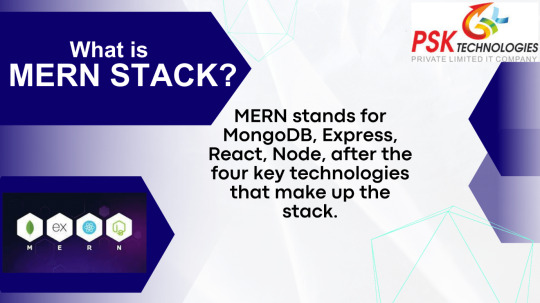
In the dynamic landscape of web and mobile application development, leveraging the power of the MERN stack (MongoDB, Express.js, React, Node.js) combined with cloud technologies has become a hallmark of modern software engineering. This comprehensive guide delves into the realm of professional MERN stack development on the cloud, exploring the synergy between these technologies and how they empower developers to craft robust, scalable, and efficient applications.
Unveiling the MERN Stack
The MERN stack encompasses a set of JavaScript-based technologies that seamlessly blend to create full-stack applications. It comprises:
MongoDB: A NoSQL database that provides flexibility in handling unstructured data and scalability for large datasets.
Express.js: A fast and minimalist backend framework for building APIs and handling HTTP requests.
React: A powerful frontend library for crafting interactive user interfaces using reusable components.
Node.js: A server-side runtime environment that allows developers to execute JavaScript code outside a web browser.
The Cloud Advantage
Incorporating cloud technologies into MERN stack development brings a multitude of benefits, ranging from scalability to security. Leading cloud providers like AWS, Azure, and Google Cloud offer a wide array of services that enhance the development process:
Scalability and Elasticity
Cloud platforms enable seamless horizontal and vertical scaling, allowing applications to accommodate varying levels of traffic. With auto-scaling features, resources are allocated dynamically, ensuring optimal performance without manual intervention.
Deployment Made Effortless
Deploying MERN stack applications on the cloud is streamlined through services such as AWS Elastic Beanstalk or Google App Engine. These platforms abstract away infrastructure management, enabling developers to focus solely on code deployment.
Robust Data Management
Integrating MongoDB with cloud-based databases like MongoDB Atlas ensures data durability, high availability, and automated backups. This provides developers with a solid foundation for managing critical application data.
Security Reinforcement
Cloud platforms offer a plethora of security features, including identity and access management, encryption, and compliance certifications. This is particularly critical when handling sensitive user data.
Continuous Integration and Deployment (CI/CD)
Implementing CI/CD pipelines using cloud-native tools automates the build, test, and deployment processes. This results in faster iterations, reduced manual errors, and enhanced collaboration among development teams.
Cost Optimization
Cloud-based solutions allow developers to pay only for the resources they consume. This cost-effectiveness is particularly advantageous for startups and businesses with fluctuating resource needs.
Crafting the Development Process
The journey of professional MERN stack development on the cloud involves several pivotal steps:
Environment Setup
Prepare your development environment by installing Node.js and npm. Initialize your project directories and create distinct package.json files for both the front end and back end.
Backend Implementation
Design your API structure and endpoints using Express.js. Connect to MongoDB using Mongoose for efficient data storage and retrieval.
Frontend Creation
Construct React components to form your application’s user interface. Utilize state and props for dynamic data management and incorporate third-party libraries for enhanced functionality.
Cloud Integration
Choose a cloud provider and set up the necessary services. Deploy your backend using serverless functions, virtual machines, or containers. Utilize cloud databases for optimal data management.
CI/CD and Monitoring
Implement CI/CD pipelines to automate testing, building, and deployment. Set up monitoring and logging tools to track performance and identify issues promptly.
Security and Optimization
Prioritize security by implementing encryption, authentication, and input validation. Optimize your application for performance by employing caching strategies and code optimization techniques.
Embracing the Future
The fusion of the MERN stack with cloud technologies unlocks a realm of possibilities for web and mobile application development. The seamless integration of MongoDB, Express.js, React, and Node.js with cloud platforms empowers developers to create applications that are not only feature-rich and scalable but also highly resilient and secure. By embracing this synergy, developers can navigate the ever-evolving landscape of technology and bring their innovative visions to life like never before.
-BALVESH PURAMKAR
Intern, PSK Technologies
1 note
·
View note
Text
Delve Deeper into MERN Mastery: AchieversIT Institute in Bangalore
In the bustling tech hub of Bangalore, where innovation is the norm and excellence is the standard, AchieversIT Institute stands tall as a beacon of learning and advancement in web development. At the forefront of this institution's offerings is its comprehensive program on MERN stack development, designed to empower individuals with the skills and expertise needed to excel in the dynamic world of full-stack JavaScript development.
Unraveling the MERN Stack:
MERN, an acronym for MongoDB, Express.js, React.js, and Node.js, represents a powerful combination of technologies that facilitate the seamless creation of modern web applications. MongoDB provides a flexible and scalable NoSQL database solution, while Express.js simplifies the process of building robust web applications on the server-side. React.js, with its component-based architecture, revolutionizes front-end development, and Node.js serves as the runtime environment for executing JavaScript code on the server-side. Together, these technologies form the backbone of the MERN stack, enabling developers to create feature-rich, responsive, and high-performance applications.
Comprehensive Curriculum:
AchieversIT Institute offers a comprehensive curriculum that delves deep into each component of the MERN stack, equipping students with a solid foundation in both front-end and back-end development. The program covers a range of topics, including database management with MongoDB, server-side development with Express.js, building interactive user interfaces with React.js, and creating scalable backend services with Node.js. Through a combination of lectures, hands-on exercises, and real-world projects, students gain a thorough understanding of the MERN stack and its practical applications.
Hands-On Learning Approach:
At AchieversIT, learning extends beyond theoretical concepts to practical, hands-on experience. Students have access to state-of-the-art labs equipped with the latest development tools and technologies, where they can apply their knowledge in a supportive and collaborative environment. Through coding exercises, projects, and assignments, students hone their problem-solving skills and gain confidence in their ability to tackle real-world challenges. Additionally, the institute fosters a culture of continuous learning, encouraging students to explore new ideas, experiment with different approaches, and push the boundaries of their creativity.
Expert Guidance and Mentorship:
One of the key strengths of AchieversIT Institute is its team of experienced faculty members and industry experts who are dedicated to the success of their students. With years of experience in web development and a passion for teaching, these mentors provide invaluable guidance, support, and mentorship to help students navigate their learning journey effectively. Whether it's clarifying concepts, providing feedback on projects, or offering career advice, the faculty at AchieversIT are committed to empowering students to achieve their goals and aspirations.
Career Readiness and Placement Assistance:
AchieversIT Institute goes above and beyond to prepare students for successful careers in the tech industry. In addition to technical skills, students receive training in essential soft skills such as communication, teamwork, and problem-solving, which are critical for success in today's workplace. The institute also offers comprehensive placement assistance, helping students connect with top employers and secure rewarding job opportunities. Through networking events, job fairs, and industry partnerships, AchieversIT ensures that students are well-equipped to embark on their professional journey with confidence and competence.
Conclusion:
For individuals aspiring to master the MERN stack and unlock a world of opportunities in web development, AchieversIT Institute in Bangalore is the ideal destination. With its comprehensive curriculum, hands-on learning approach, expert guidance, and career-focused programs, AchieversIT empowers students to delve deeper into MERN mastery and emerge as proficient and sought-after developers in the tech industry. Join AchieversIT today and take the first step towards a rewarding and fulfilling career in web development.
0 notes
Text
Top Full Stack Developer Interview Questions (2024)

In the dynamic landscape of technology, Full Stack Development has emerged as a crucial field, demanding professionals with a diverse skill set and a deep understanding of both frontend and backend technologies. As companies continue to embrace digital transformation, the demand for skilled Full Stack Developers remains high. This article delves into the top Full Stack Developer interview questions for 2024, focusing on the Java Full Stack roadmap and Python Full Stack syllabus.
Introduction to Full Stack Development
Full stack development refers to the practice of working on both the front end and back end of a web application or software. A full stack developer is someone who is proficient in working with both the client-side and server-side technologies, allowing them to handle all aspects of the development process.
In a typical full stack development scenario, the front end involves creating the user interface and user experience (UI/UX) of the application. This includes designing and developing components such as web pages, forms, buttons, navigation menus, and interactive elements using technologies like HTML, CSS, JavaScript, and front-end frameworks like React, Angular, or Vue.js.
On the other hand, the back end involves working with the server-side logic, databases, and server management. This includes tasks such as handling user authentication, processing data, managing server requests, and interacting with databases to store and retrieve information. Technologies commonly used in back-end development include programming languages like Node.js, Python, Java, or PHP, along with frameworks like Express.js, Django, Spring Boot, or Laravel.
Full stack developers are required to have a diverse skill set that encompasses both front-end and back-end technologies. They need to understand how to integrate these technologies seamlessly to build fully functional and responsive web applications. Additionally, they should be familiar with version control systems like Git, deployment processes, and have a good grasp of software development principles and best practices.
Overall, full stack development offers a holistic approach to building web applications, allowing developers to work on all layers of the software stack and deliver end-to-end solutions that meet user requirements effectively.
Top Interview Questions for Full Stack Developers

Technical Questions
Sure, here are some top interview questions for full-stack developers:
Frontend Development:
What are the key differences between HTML, CSS, and JavaScript?
Explain the box model in CSS and how it affects layout.
What is responsive web design, and how do you ensure your web applications are responsive?
How do you optimize website performance, both in terms of loading speed and user experience?
What are CSS preprocessors like Sass or Less, and why would you use them?
Backend Development:
What is the difference between server-side scripting and client-side scripting?
Explain the role of databases in web development and discuss different types of databases you are familiar with.
What is RESTful API, and how do you design and consume RESTful APIs?
How do you handle authentication and authorization in a web application?
Discuss the importance of caching in backend development and some popular caching strategies.
Full-Stack Development:
What is the MEAN (MongoDB, Express.js, AngularJS, Node.js) stack, and how does it differ from the MERN (MongoDB, Express.js, React, Node.js) stack?
Explain the concept of MVC (Model-View-Controller) architecture and how it's implemented in web development.
How do you handle state management in a single-page application (SPA)?
Discuss the advantages and disadvantages of monolithic vs microservices architecture for web applications.
What tools and technologies do you use for version control, continuous integration, and deployment?
Problem-Solving:
Given a scenario, how would you approach debugging a frontend/backend issue in a web application?
Describe a challenging project you worked on and how you overcame technical obstacles during its development.
Implement a simple algorithm (e.g., reverse a string, find the largest number in an array) using a programming language of your choice.
How do you ensure code quality and maintainability in a collaborative development environment?
Discuss your experience with testing methodologies such as unit testing, integration testing, and end-to-end testing.
Soft Skills and Communication:
How do you prioritize tasks and manage your time effectively when working on multiple projects or tasks simultaneously?
Describe a situation where you had to work in a team and resolve conflicts or disagreements effectively.
How do you stay updated with the latest trends and technologies in web development?
Explain a complex technical concept to a non-technical stakeholder or client.
Discuss a project where you had to quickly learn a new technology or framework and how you approached the learning process.
These questions cover a range of topics and skills that are important for full-stack developers, including technical knowledge, problem-solving abilities, communication skills, and project management experience. Adjust the complexity of the questions based on the seniority level of the position you are hiring for.
Behavioral Questions
Certainly, here are some behavioral questions tailored for full-stack developers:
Adaptability and Learning:
Describe a time when you had to quickly learn a new technology or programming language for a project. How did you approach the learning process, and what was the outcome?
Can you give an example of a challenging technical problem you faced and how you overcame it through self-directed learning or seeking help from others?
Problem-Solving and Decision Making:
Walk me through a complex issue you encountered during a project. How did you analyze the problem, identify possible solutions, and make a decision on the best course of action?
Describe a situation where you had to prioritize tasks or features in a project with tight deadlines. How did you decide what to focus on first, and what was the result?
Collaboration and Communication:
Discuss a project where you worked closely with a team of developers, designers, or other stakeholders. How did you ensure effective communication and collaboration among team members?
Can you share an example of a time when you had to present technical information or solutions to non-technical stakeholders? How did you ensure they understood the key points?
Handling Challenges and Failures:
Describe a project or task that didn't go as planned. What challenges did you face, and how did you handle the situation? What did you learn from the experience?
Have you ever made a mistake in your code that caused a significant issue? How did you identify and rectify the error, and what steps did you take to prevent similar mistakes in the future?
Leadership and Initiative:
Have you ever taken the lead on a project or initiative? What was your role, and how did you ensure the project's success?
Describe a time when you proposed an innovative solution or improvement to an existing process or technology. How was your idea received, and what was the outcome?
These behavioral questions focus on the candidate's ability to adapt, solve problems, collaborate effectively, learn from challenges, and take initiative. They provide insights into the candidate's past experiences and behaviors, which can help assess their fit for the role and the team dynamics.
Java Full Stack Developer Interview Questions

Sure, here are some Java Full Stack Developer interview questions:
What is the difference between JDK, JRE, and JVM?
Explain the concept of object-oriented programming and its key principles.
What is a servlet? How does it differ from an applet?
What is JDBC? How do you connect Java applications to databases using JDBC?
Can you explain the Spring framework and its core features?
What is RESTful web services? How do you implement RESTful APIs in Java?
Explain the MVC (Model-View-Controller) architecture and its advantages in web development.
What are some commonly used design patterns in Java? Provide examples.
How do you handle transactions in a Java application? Discuss the transaction management options.
What tools and technologies do you use for front-end development in a Java Full Stack environment?
Can you explain the concept of microservices architecture? How does it differ from monolithic architecture?
How do you ensure security in a Java web application? Discuss some best practices.
What is Docker, and how do you use it in Java application deployment?
Discuss the differences between SOAP and RESTful web services.
Can you explain the concept of dependency injection and how it is implemented in Spring?
These questions cover a range of topics typically encountered in Java Full Stack Developer interviews. Candidates should be able to demonstrate their understanding of Java programming, web development concepts, frameworks like Spring, and related technologies.
Python Full Stack Developer Interview Questions

Certainly! Here are some Python Full Stack Developer interview questions:
What is the difference between Python 2 and Python 3? Why should we use Python 3 for new projects?
Explain the concept of virtual environments in Python and why they are useful.
How does Flask differ from Django? When would you choose one over the other for a web development project?
What is ORM (Object-Relational Mapping)? Provide an example of an ORM library used in Python.
Describe the process of deploying a Flask or Django application to a production server.
What are decorators in Python? How can decorators be used in web development?
Explain the role of WSGI (Web Server Gateway Interface) in Python web applications.
What is RESTful API? How would you design and implement a RESTful API using Python?
Discuss the importance of testing in software development. What are some popular testing frameworks used in Python?
How do you handle database migrations in Django or Flask applications?
Describe the difference between synchronous and asynchronous programming. When would you choose asynchronous programming in Python?
What are some strategies for optimizing the performance of a Python web application?
Discuss the security considerations you would take into account when developing a web application in Python.
Have you worked with any cloud platforms for deploying Python applications? If so, which ones and what was your experience?
Can you explain the concept of caching in web development? How would you implement caching in a Python-based web application?
These questions cover a range of topics relevant to python full stack syllabus , including web frameworks, databases, testing, optimization, security, and deployment. Adjust the complexity of the questions based on the candidate's level of experience.
Tips for Acing Full Stack Developer Interviews
Review and practice coding exercises related to data structures, algorithms, and design patterns.
Showcase your portfolio projects and highlight your contributions and problem-solving skills.
Prepare for behavioral questions by reflecting on past experiences and achievements.
Stay updated with the latest trends and technologies in Full Stack Development.
Conclusion
In conclusion, Full Stack Developer interviews in 2024 require a comprehensive understanding of various technologies, from core programming languages to advanced frameworks and tools. By preparing diligently and showcasing your skills and experiences effectively, you can increase your chances of landing a rewarding Full Stack Developer role.
FAQs
What is the role of a Full Stack Developer? A Full Stack Developer is responsible for designing, developing, and maintaining web applications, handling both frontend and backend aspects of the software.Which programming languages are essential for Full Stack Development? Key languages include JavaScript, Python, Java, and frameworks such as React, Angular, Spring Boot, and Django.How can I improve my skills as a Full Stack Developer? Practice coding regularly, work on real-world projects, stay updated with industry trends, and participate in online communities and forums.What are some common challenges faced by Full Stack Developers? Challenges may include managing diverse technologies, ensuring scalability and performance, and staying updated with rapid technological advancements.What opportunities does Full Stack Development offer in the job market? Full Stack Developers are in high demand across industries, offering lucrative career prospects and opportunities for growth and innovation.
and innovation.
0 notes
Text
Top Web Development Stacks in 2024

In today’s rapidly evolving technological landscape, new technologies and stacks are introduced at an unprecedented pace. If you find yourself bewildered by the myriad of options, wondering which technology stacks reign supreme in 2024, you’re not alone.
As we stride into 2024, certain stacks, such as MERN Stack and MEAN Stack development, have emerged as the frontrunners, showcasing their prowess and capabilities. Numerous web stacks are poised to become the most popular choices in the IT industry, thanks to their widespread popularity and robust features.
Without further wait, let’s delve into the top and most popular web development stacks in 2024.
What is a Web Development Stack?
A web development stack, also known as a web application stack or solution stack, is the collection of technologies used to build a website or web application. It’s essentially the foundation upon which your website or app is built, and it includes everything from the programming languages and frameworks used to the servers and databases that power it.
Front-end: This is the part of the website that users see and interact with. It includes technologies like HTML, CSS, and JavaScript.
Back-end: This is the part of the website that handles the behind-the-scenes work, such as storing data and processing requests. It includes technologies like programming languages (e.g., Python, PHP, Java), web frameworks (e.g., Django, Rails, Laravel), and databases (e.g., MySQL, PostgreSQL, MongoDB).
What are the Leading Web Stack Technologies in 2024?
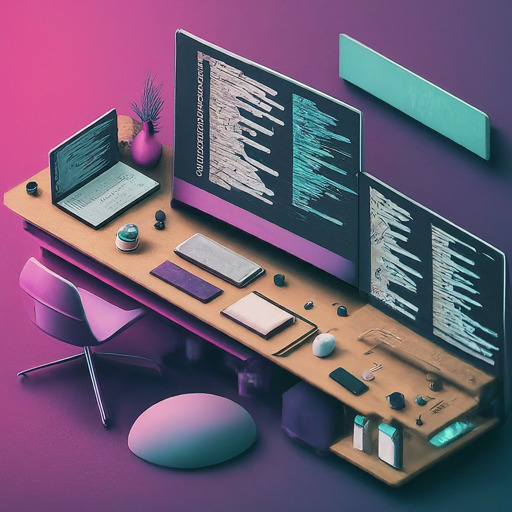
The MERN stack is a popular web development stack that consists of four main components: MongoDB, Express.js, React, and Node.js.

MongoDB stands out as a NoSQL database, storing data in documents resembling JSON format. Offering scalability and flexibility, MongoDB efficiently manages substantial data sets. Its document-oriented model facilitates seamless integration with JavaScript and applications based on JSON.
Express.js
Express.js, serving as a backend framework for Node.js, streamlines the process of web application development. It presents a comprehensive array of functionalities for routing, middleware management, and handling requests. Express.js delivers a nimble and adaptable framework, ideal for constructing scalable and efficient APIs.
React js
React, a JavaScript library designed for crafting user interfaces, adopts a component-based architecture empowering developers to fashion reusable UI components. Through React’s virtual DOM, targeted updates are efficiently executed, enhancing performance by focusing solely on the essential parts of the user interface.
Node.js
Node.js is an open-source, cross-platform JavaScript runtime environment that allows developers to execute server-side code using JavaScript. Developed on the V8 JavaScript engine by Google, Node.js enables the execution of JavaScript code outside of a web browser. It is particularly well-suited for building scalable and high-performance network applications, as it utilizes an event-driven, non-blocking I/O model.
What is the Serverless Stack?
A Serverless Stack refers to a set of technologies and services that enable the development and deployment of applications without the need to manage traditional server infrastructure. In a serverless architecture, developers can focus on writing code and building functionalities without concerning themselves with the underlying servers or infrastructure management. The term “serverless” does not mean there are no servers involved; instead, it implies that the responsibility of server management is abstracted away from the developer.
LAMP stack:
What are full form of LAMP stack?Linux, Apache, MySQL, PHP
Linux:
The operating system (OS) on which the other components of the stack run. Linux is chosen for its stability, security, and open-source nature. It provides a robust foundation for hosting web applications.
Apache:
The web server software that serves as the HTTP server for the stack. Apache is highly configurable, reliable, and widely used. It handles incoming web requests, communicates with the application server, and serves static content to users’ browsers.
MySQL:
The relational database management system (RDBMS) used for storing and managing the application’s data. MySQL is known for its speed, reliability, and scalability. It is often used with the Structured Query Language (SQL) for database queries.
PHP:
The scripting language used for server-side web development. PHP is embedded within HTML code and executed on the server, generating dynamic content that is sent to the client’s browser. It is widely used for building web applications and is known for its ease of integration with MySQL.
PERN Stack :
The PERN stack is a software stack that is specifically designed for building web applications. PERN is an acronym representing the four main components of the stack:
PostgreSQL:
The relational database management system (RDBMS) that serves as the data storage layer for PERN applications. PostgreSQL is known for its robustness, extensibility, and support for complex queries. It is a powerful open-source database.
Express.js:
A minimal and flexible Node.js web application framework that serves as the backend (server-side) component of the stack. Express.js simplifies the process of building APIs (Application Programming Interfaces) and handling HTTP requests in Node.js applications.
React:
A JavaScript library for building user interfaces that serves as the frontend (client-side) component of the stack. React is developed and maintained by Facebook and is widely used for creating dynamic and interactive user interfaces in single-page applications.
Node.js:
A JavaScript runtime that allows developers to execute server-side code using JavaScript. Node.js is used as the runtime environment for the Express.js server, allowing for server-side JavaScript execution. It enables building scalable and high-performance network applications.
Ruby on Rails Development
“Ruby on Rails,” often referred to as Rails or RoR, is a web application framework written in the Ruby programming language. Created by David Heinemeier Hansson, Rails follows the principles of convention over configuration (CoC) and don’t repeat yourself (DRY). Released in 2005, Ruby on Rails has gained popularity for its elegant syntax, developer-friendly conventions, and emphasis on productivity.
Conclusion
Choosing the right web development stack for project success in 2024 is critical, impacting aspects ranging from user experience to scalability and maintenance. With no one-size-fits-all solution, it’s essential to recognize each project’s uniqueness, necessitating careful consideration of factors like project requirements, scalability, team expertise, and security. In the dynamic web development landscape, staying informed about emerging trends is vital, enabling adaptability to evolving user needs and technological advancements.
Read More at - https://nitsantech.com/blog/top-web-development-stacks
0 notes
Text
Suppose you are a beginner and want to acquire knowledge related to Mern Stack Development. What are you going to do? To help you find the correct information, we have come up with a detailed understanding of an open-source framework with powerful technologies known as Mern Stack development trends.
#mern stack development trends#mern stack development#software development services#healthcare software solutions
0 notes
Text
To excel as a MERN Full Stack Developer, proficiency in JavaScript is essential, along with expertise in JavaScript, HTML & CSS, MongoDB, Express.js, React.js, and Node.js. These languages form the core of the MERN stack, empowering developers to create dynamic and scalable web applications. To learn more about this join MERN Stack Developer Course.
0 notes
Text
Mastering MERN: A Comprehensive Guide to MERN Stack Development Course
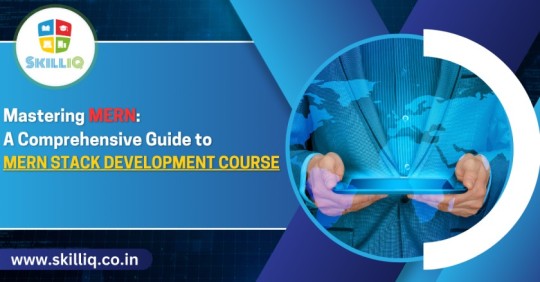
Are you ready to embark on a journey to become a proficient MERN stack developer? Our "Mastering MERN" course is your passport to mastering the art of building dynamic web applications using the MERN (MongoDB, Express.js, React.js, Node.js) stack.
Why MERN Stack?
The MERN stack has gained immense popularity for its seamless integration of powerful technologies that cover the entire spectrum of web development. MongoDB as the NoSQL database, Express.js as the backend framework, React.js for front-end user interfaces, and Node.js to execute server-side logic — these technologies together form a robust and efficient development stack.
Course Highlights:
MongoDB Mastery: Dive deep into MongoDB, a highly scalable and flexible NoSQL database. Learn to design and manage databases effectively, ensuring your applications handle data with ease.
Express.js Fundamentals: Uncover the power of Express.js, the popular Node.js framework, to build robust and scalable server-side applications. Understand routing, middleware, and HTTP methods to create a solid backend foundation.
React.js Unleashed: Discover the magic of React.js for building interactive and dynamic user interfaces. From components to state management, this course ensures you grasp the essentials of React.js development.
Node.js Essentials: Master the server-side using Node.js. Learn to handle requests, manage dependencies, and build RESTful APIs, creating a seamless connection between the backend and frontend of your applications.
Full-Stack Project: Apply your skills to a comprehensive, real-world project. From concept to deployment, you'll work on a full-stack application that showcases your MERN stack prowess.
Industry-Ready Skills: Gain practical insights into best practices, debugging techniques, and project structuring. Understand how to collaborate effectively with version control systems and deploy your applications to popular hosting platforms.
Conclusion
The MERN Stack Development Course by SkillIQ is a comprehensive and hands-on learning experience designed to equip participants with the essential skills for building robust web applications. Covering MongoDB, Express.js, React, and Node.js, this course guides learners through each component of the MERN stack, providing practical insights and real-world examples.
#Mern stack Development Course#Mern Stack Development Training in Ahmedabad#Mern Stack Development Certification In Ahmedabad
0 notes
Text
Full Stack Development Frameworks: Choosing the Right One

In the dynamic world of web and software development, staying ahead of the curve is crucial. Full Stack Development, the art of mastering both the front-end and back-end aspects of web development, is a skillset highly sought after by today's tech industry. It's an ever-evolving field, and choosing the right framework is paramount to achieving success in this domain.
The Landscape of Full Stack Development
If you're seeking full stack development training Institute in Uttam Nagar, you're in the right place to kickstart your career. Full stack development courses in Uttam Nagar offer aspiring developers the knowledge and hands-on experience they need to excel in this industry. One of the key decisions you'll make as a full stack developer is choosing the right framework.
Choosing the Right Full Stack Development Framework
Selecting the appropriate framework can significantly impact your productivity, the quality of your work, and your overall development experience. Here are some popular frameworks and factors to consider when choosing the right one:
1. MEAN Stack:
Pros: Offers a uniform language (JavaScript) for the entire stack, making it easier for developers to switch between front-end and back-end tasks.
Cons: May not be ideal for all project types, and it might require a steep learning curve for beginners.
2. MERN Stack:
Pros: Similar to MEAN but with React as the front-end library, which is incredibly popular for building user interfaces.
Cons: Like MEAN, it can be challenging for those new to JavaScript.
3. Django:
Pros: Known for its robust security features and a built-in admin interface, making it an excellent choice for rapid development and secure web applications.
Cons: Best suited for Python enthusiasts and may not be as flexible as other frameworks.
4. Ruby on Rails:
Pros: Famous for its simplicity and convention over configuration, which allows for fast development.
Cons: While it's efficient for certain applications, it might not be suitable for highly customized projects.
5. LAMP Stack:
Pros: A well-established stack consisting of Linux, Apache, MySQL, and PHP. It's versatile and used for a wide range of web applications.
Cons: PHP may not be as popular as JavaScript-based languages for modern web development.
6. Serverless Framework:
Pros: Offers a serverless architecture, which is great for cost efficiency and scalability.
Cons: Might not be suitable for all types of projects, and serverless technologies are relatively new.
When choosing a framework, consider factors like your project requirements, your familiarity with the programming language, community support, and the specific tools or libraries available within each framework.
The Salary and Scope of Full Stack Development
Full stack development is a lucrative career choice. The salary of a full stack developer varies based on factors such as location, experience, and the specific technologies they work with. On average, a full stack developer can earn a competitive salary, often exceeding that of specialized front-end or back-end developers.
The scope of full stack development is vast and promising. With the ever-increasing demand for web and app development, full stack developers are well-positioned to find job opportunities in various industries. They can work as freelancers, join web development agencies, or become valuable assets in tech companies. Moreover, the ability to handle both front-end and back-end tasks provides full stack developers with a unique skill set that is highly marketable.
Conclusion
Choosing the right full stack development framework is a crucial decision that can significantly impact your development career. By enrolling in a full stack development course in Uttam Nagar and honing your skills, you're on the path to a promising career with a high earning potential in the dynamic field of web development.
Top of Form
#full stack development course in yamuna vihar#full stack training#bestcourse#attitude academy#learnwithattitudeacademy#full stack web development#enrollnow#full stack course
0 notes
Text
Mastering MERN Stack: A Course with Placement Opportunities

In the ever-evolving landscape of web development, staying ahead of the curve is essential. The MERN stack, comprising MongoDB, Express.js, React.js, and Node.js, has emerged as a powerhouse combination for building robust and scalable web applications. Mastering this technology stack not only equips developers with a versatile skill set but also opens doors to promising career opportunities. In this article, we will explore the benefits of enrolling in a MERN stack course with placement assistance and how it can shape your journey in the tech industry.
The MERN Stack: A Technology Powerhouse
The MERN stack represents a full-stack solution for modern web development. MongoDB, a NoSQL database, provides flexibility and scalability for handling large datasets. Express.js streamlines server-side operations, allowing for seamless handling of HTTP requests. React.js, a front-end library, enables the creation of interactive user interfaces. Node.js, on the other hand, facilitates server-side scripting, ensuring efficient handling of concurrent users. Together, these technologies form a cohesive framework, making MERN a go-to choice for building dynamic web applications.
Comprehensive Learning Experience
A MERN stack course with placement is designed to provide a comprehensive learning experience. Starting from the fundamentals of each technology, students gradually progress to building complex, real-world applications. Hands-on projects and coding exercises are integrated into the curriculum, ensuring that theoretical knowledge is reinforced with practical application.
Industry-Relevant Curriculum
One of the key advantages of such a course is its industry-oriented curriculum. The syllabus is curated to align with the latest trends and demands in the tech industry. This ensures that students are equipped with the skills and knowledge that are directly applicable in real-world scenarios.
Placement Assistance: Bridging the Gap Between Learning and Employment
One standout feature of a MERN stack course is the inclusion of placement assistance. This valuable service acts as a bridge between the completion of the course and the commencement of a fulfilling career. Placement assistance encompasses various aspects, including resume building, interview preparation, and connecting students with potential employers.
Tailored Resume Building
Crafting an effective resume is a crucial step towards landing a dream job. A MERN stack course with placement typically includes workshops or sessions dedicated to resume building. Experienced mentors guide students in showcasing their skills and projects in a compelling manner, increasing their chances of catching the eye of prospective employers.
Interview Preparation and Mock Interviews
Facing interviews can be nerve-wracking, especially for those entering the industry for the first time. These courses often offer specialized sessions on interview preparation. This may include guidance on technical interview questions, soft skills development, and strategies for handling various interview formats. Mock interviews further allow students to practice and receive constructive feedback, building their confidence for the real deal.
Networking Opportunities
Being part of a MERN stack course not only provides technical education but also opens doors to a network of like-minded professionals. Guest lectures, workshops, and industry events organized as part of the course create opportunities for students to connect with experienced professionals, potential employers, and fellow learners.
Landing Promising Career Opportunities
Equipped with a solid understanding of the MERN stack and supported by placement assistance, graduates of such courses find themselves in a strong position to secure promising career opportunities. The demand for MERN stack developers continues to grow, and companies actively seek professionals with expertise in these technologies.
In conclusion, enrolling in a MERN stack course with placement assistance is a strategic move for anyone aspiring to excel in web development. The comprehensive curriculum, coupled with invaluable placement support, equips students with the skills and confidence needed to embark on a successful career in the tech industry. So, don't just learn MERN; invest in a course that helps you secure your place in the ever-evolving world of web development.
0 notes
Text
Exploring MERN Stack: Introduction, Parts, Importance, and Applications
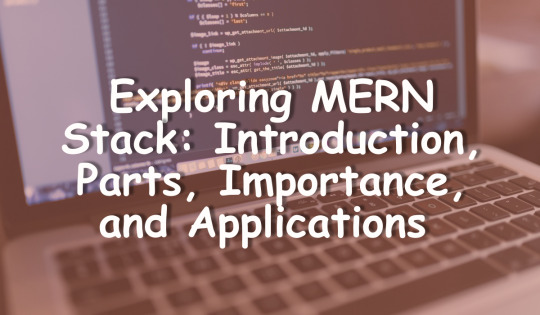
MERN- Foreword
MERN is used to develop to build dynamic and Robust Web Applications. It is following the traditional architectural pattern of three tiers that are the frontend, the backend, and the database. It is a user-friendly full-stack JavaScript framework. Four main technologies make up the MERN stack.
MongoDB- Used for preparation of document database and it is a NoSQL Database System
Express- Used for developing Node.js web framework
React- Used for developing client-side JavaScript framework.
NodesJS- Used for developing the premier JavaScript web server
It is an ideal choice for cases that are JSON-heavy, cloud-native and have dynamic web interfaces. Examples - Workflow management, news aggregation, to-do apps and calendars, interactive forums, etc.
Parts of MERN
MongoDB
It is an open-source NoSQL database that can process structured, semi-structured and unstructured data. It uses a non-relational, document-oriented data model and a non-structured query language. It is very flexible and gives you the ability to store and handle large amounts of data in comparison to traditional relational databases.
It is a document database that stores data in JSON format type called BSON. The documents are the records stored and the field value may include numbers, strings, booleans, or nested documents.
Express
It is part of the backend component of MERN. It is a Nodes.js framework in which code writing for back-end code is easy. It is robust, efficient, asynchronous, and single-threaded.
It helps in designing web applications and APIs as well as supports many middlewares that make code writing short and easy.
React
React.js is open source JavaScript framework and library developed by Facebook. It does not use many codes to develop interactive user interfaces and web applications. It provides an organized and structured process for developing user interfaces with reusable components. These components consist of individual pieces of a final interface that form the application’s user interface after assembly.
It is easy to use because it gives the developers the freedom to set conventions that they require and can implement it however they want. React can be used to create a single button, a few parts of the interface, or an entire app’s interface.
Companies using React are Facebook, Instagram, Netflix, discord, WhatsApp web, etc.
NodesJS
It is an open-source JavaScript Runtime Environment that allows the user to run their code on the server. It follows a single-threaded model, had high scalability, and has a fast code execution.
Why is MERN important?

There are a variety of reasons that justifies MERN as one of the most popular stacks in the technological world.
It has the most popular library React which is an essential tool for web developers because it simplifies the building and management of application user interface and improves site performance.
React is based on single page application (SPA) which includes access to a web page from a single web page. User can avoid loading a new web page with each action which give user a satisfactory experience.
Everything is written in one language which makes MERN not only fast but also easy to switch between client and server.
All the technological parts in MERN are open source which allows a developer to get solutions from the open portals available. This is extremely beneficial for the developers.
MERN uses REST API which acts as a middleware and is reusable in every application. It allows you to connect applications to each other. The APIs are based on HTTP and close web communication styles which is a huge advantage for MERN.
REST APIs allows the developers to freedom of developing new front-ends and applications that can be linked to the system very easily.
Where is MERN used?
MERN is important for development of frontend and backend to create impressive and influential web applications. Some of the giant cooperations of the world use MERN stack to develop their web apps.
LinkedIN
It is world famous for professional connections. It helps people in finding job opportunities and helping companies grow by enhancing recruitment. It uses MERN Stack Development since it shifted to Nodes.js in 2011 for better optimization of their app. It also minimised the server resources which made the app 20 times faster.
Netflix
It has a built in user interface based on Nodes.js and is much preferred by its developers because of its modular framework. As a result, Netflix's speed increased by two times.
NASA
It is the US government space agency that uses Nodes.js and used its features MicroServices. NASA developers focused upon developing an app using a collection of small services. It enabled NASA to endorse cloud based solution and take their organization to the cloud.
Closure
MERN stack is the most popular technology stack preferred by developers because it provides a variety of opportunities and features for them to use for web application development. Modularity is the biggest advantage because of its flexibility and ability to build a custom solution.
0 notes
Text
Full Stack Developer Course in Chandigarh
Excellence Academy Is A Professional IT Company That Provides Full Stack Developer Course In Chandigarh. We Are Leading Software Development Company And Till Now We Have Successfully Completed 2212+ PROFESSIONALS, 205+ BATCHES With 4.9/5 RATING From Our Students.
We Have Trained Over 1000+ Professionals Through Our 100% Job Oriented Full Stack Training In Chandigarh Who Have Advanced Their Skills & Secure Their Future In The Past 5 Years. We Have An Expert Team Of Professionals Who Are Very Innovative & Passionate & Certified By Leading Brands Like Google, Bing & Hubspot.

Full stack developers
They are responsible for coding end-to-end workflows by using both front-end and back-end technologies. MERN STACK and MEAN STACK are examples of JavaScript-based technology stack that full stack developers can use to build end-to-end applications.
Advantages
The advantage of being a full stack web developer is:
You can master all the techniques involved in a development project
You can make a prototype very rapidly
You can provide help to all the team members
You can reduce the cost of the project
You can reduce the time used for team communication
You can switch between front and back end development based on requirements
You can better understand all aspects of new and upcoming technologies.
Front end vs back end vs full stack
Applications that require higher scalability and more complex workflows require broader skill sets and collaboration across teams. For example, the front end may be handled by the UI team, and the back end by another team. In some organizations, individuals will be required to work on both the front-end and back-end implementation of a feature. This is where full stack developers would come into play.
Front-end developers
These developers handle the UI of a web application (or website)—for example, visual effects, frames, navigation, and forms. They focus mainly on user experience and use HTML, CSS, and JavaScript as programming languages.
Back-end developers
They deal with the business logic, security, performance, scalability, and handling request-response of the application. They create or use frameworks to design the core application workflows and use technologies like JavaScript, Python, Java, and .NET.
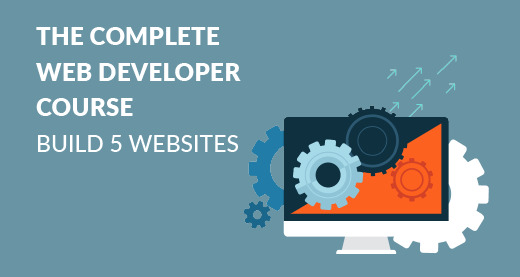
Why Choose Us:
We are Full Stack Developer Training in Chandigarh, Providing world class and IT Sector Accepted Web Designing Course Especially to the student, Housewives and Business Owner, Polytechnic student, 12th Pass student, Graduate student and to those who are looking to join Full Stack Developer Course In Chandigarh with 100% Job Placement.
0 notes
Text
Top Reasons to Choose MERN Stack Development For Your Next Project
MERN Stack Development: Important Facts to know
In Present era, Web applications are being used in almost every industry, providing an easy to access interface for users to interact with. Don’t wonder there are 200,000+ web developers currently in the USA! Front-end development frameworks like Angular.js, Node.js, and React.js have exterminated back-end frameworks in developing mobile apps and websites. Furthermore, with these technologies, we’ve been able to reduce code size and enhancing coding effectiveness. But because bespoke software application development trends and technology move so sharply, a developer must stay alongside of the most recent market developments. Only the MERN stack development is capable of fulfilling this.
Its UI execution, open-source nature, and simplicity of switching b/w customer and server all contribute to this. It aims to enhance the performance of an application as a whole.
MERN Stack Development: Overview
The MERN stack is a collection of robust technologies to build scalable master online apps. It comprises front-end, back-end, & database components. This set of tools enables the creation of user-friendly full-stack JavaScript frameworks for dynamic websites and mobile applications. It comprises four different technologies—Mongo DB, Express, React JS, and Node—are used in its implementation.
MVC (Model View Controller) Architecture
Model, View, and Controller are the three layers that make up the 3-tier MVC architecture, which can be used to build web and mobile applications.

MERN Stack: MVC Architecture
(a) Model: The database’s retrieval, storing, updating, and manipulation tasks fall under this layer.
(b) View: User interactions fall under the purview of the view layer. The elements on a web page that the user can see, such as buttons, graphics, animations and colours, are referred to as the front end. This user interface makes the model layer’s data visible.
(c) Controller: This layer controls front-to-back communication between the model and the view. Its task is to receive user requests, process them with the model layer, and provide the finished product back to the view layer for the visible component.
Components of MERN
Four JavaScript-based components make up MERN Stack: MongoDB, Express.js, React.js, and Node.js, all of which are briefly described here in this post:
1. MongoDB
It is a cross-platform, open-source document-oriented database program. It is a NoSQL database with schemas based on JSON documents. MongoDB is flexible, and its document model defines objects in code, making it simple to manipulate data. It provides horizontal scaling and high availability since it is fundamentally distributed.
MongoDB’s characteristics :
· Horizontal scalability,
· High dependability,
· Cloud-native observability,
· Management tools, and geographical dispersion.
2. Express.js
The next level down is Express.js, which runs inside a Node.js server. Express.js is a “fast, un opinionated, easy web framework for Node.js,” which is just what it is. Besides HTTP requests and answers, Express.js offers robust URL routing functionality.
Businesses can link to the Express.js functions that power their applications by sending XML HTTP Requests (XHRs), GET requests, or POST requests from their React.js front end. The data in the MongoDB database is accessed and updated by those functions which use the Node.js drivers for MongoDB.
3. React.js
React.js, a declarative JavaScript framework for building dynamic client-side apps in HTML, makes up the topmost layer of the MERN stack. React allows businesses to connect simple components to data on the back-end server, connect complicated interfaces to those connections, and render those interfaces as HTML.
It contains all the bells and whistles you’d expect from a current web framework, including the best support for forms, error handling, events, lists, and more. React handles stateful, data-driven interfaces hassle-free with little code.
4. Node.js
It is a cross-platform mobile app development platform with an open-source JavaScript runtime environment for the back end. Node.js is a V8 engine running JS code outside a web app. In addition to developing original content for web apps, collecting forms, editing database data, and managing server files, Node.js can be used for various tasks.
Node.js only executes one process simultaneously rather than starting new threads for each request. It also includes a collection of I/O primitives to keep JS code from getting stuck.
Why Choose MERN Stack Development
1. Reusable Code
MERN technologies based web applications has interchangeable and reusable parts. As a result, code from one project can be reused on various platforms. This production-approved reusable component enables fast and efficient development of web apps, ensuring the shortest turnaround time.
2. Better Performance
Legacy LAMP languages (e.g. PHP) are the foundation of all open-source systems like WordPress and Shopify. While, The Node.js features, is part of the MERN stack, making it possible to manage a sequence of tasks asynchronously. This improves the capacity of programs to handle demanding events and data-driven applications. As a consequence of it, the speed of the application as a whole is multiplied, and its performance is increased.
3. Cloud Compatibility & High Scalability
There is no way that scalability can be compromised because things are constantly being uploaded to all platforms. MongoDB, a NoSQL database is highly scalable and compatible with cloud storage. Thus, the information obtained from the platforms may be conveniently managed from any worldwide location.
4. Customizable Frontend Reducing Complexity
Due to the substantial HTML content and server-side scripting, the PHP-based LAMP architecture basically uses backend coding and offers a static user experience. On the other side, the MVC architecture supported by the MERN stack allows for a limitless degree of platform frontend customization. Thus, organizations can revise their user interface to offer a distinctive experience to their users rather than managing the content via backend panels.
5. Real-Time Experience
A prominent feature of MERN stack is that it works in real-time, i.e., notifications, updates, etc., are done instantly, without the need to wait for the page to refresh.
6. Adaptable Modifications
All scripts and components are hosted on a cloud platform that’s why testing and modifying codes is comparatively more straightforward. The development and testing times are significantly shortened, and provide efficient application changes.
7. Zero Licensing
MERN has no licensing requirements. It allows libraries and public repositories to access MRN pretty quickly.
Future of MERN Stack Development
MERN stack development is conceivably the future of full-stack development due to its high speed, superior components, and simple development procedure. It gives a different and incredibly engaging user experience and assists businesses in creating highly dynamic app designs.
Since they only use a single language, proven stack technologies like MERN is ideal for projects of all sizes.
Are you looking for dedicated MERN Stack developers for next app project? Then we at AResourcepool are here to help you. Our team of experts will help you develop cross-platform, high-performance applications whether it is for eCommerce, ERP or CMS.
Content Reference:
https://markovate.com/blog/mern-stack-development/
0 notes
Link
0 notes